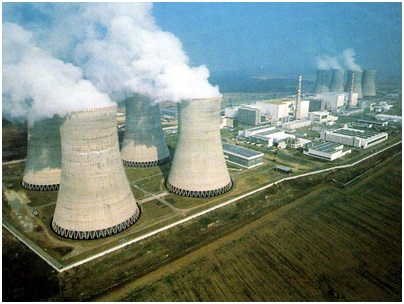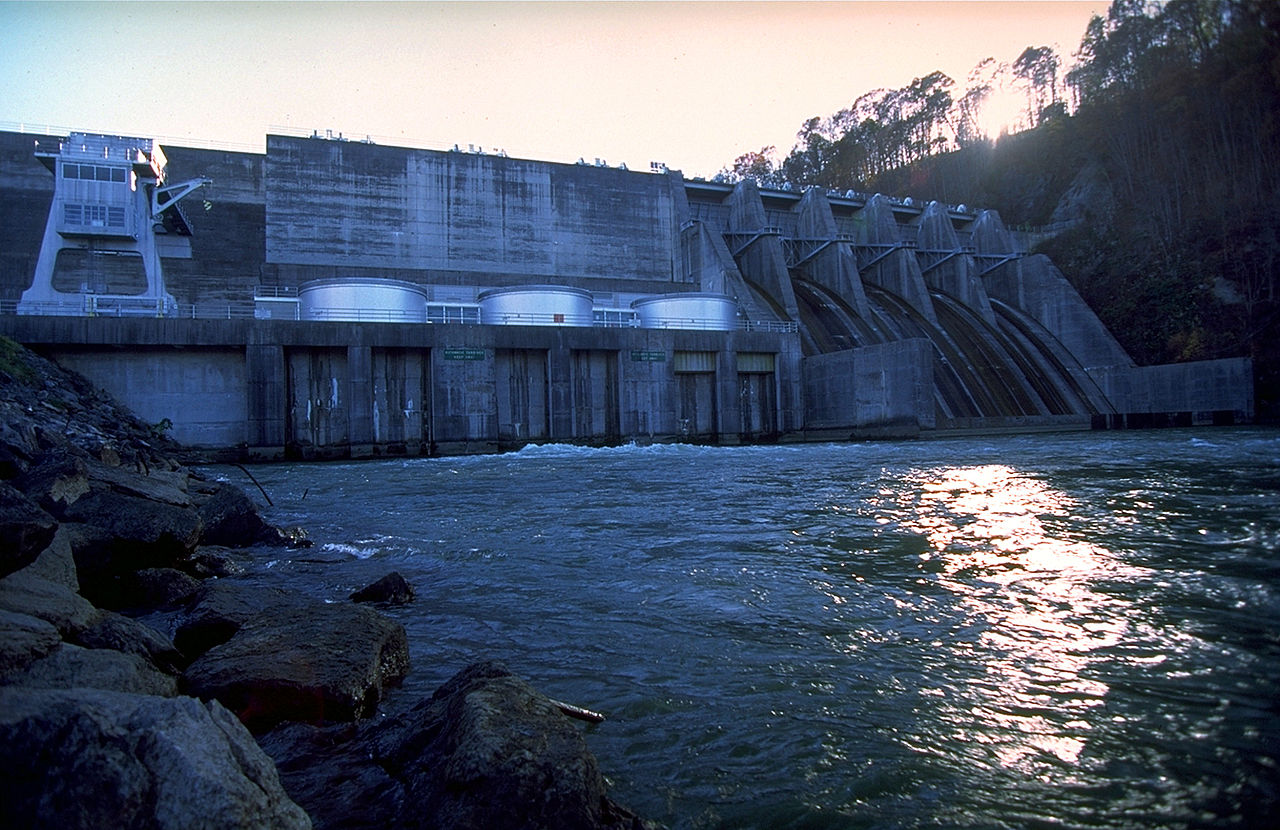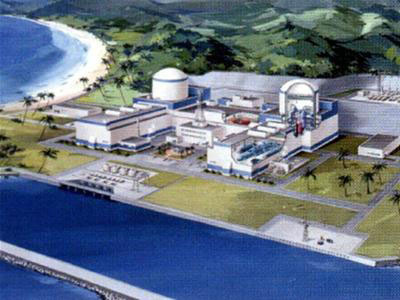
Blog
-
Geiger Readings for January 29, 2014
Ambient office = 137 nanosieverts per hourAmbient outside = 78 nanosieverts per hourSoil exposed to rain water = 80 nanosieverts per hourVine ripened tomato from Central Market = 98 nanosieverts per hourTap water = 89 nanosieverts per hourFiltered water = 66 nanosieverts per hour -
Nuclear Reactors 203 – India and U.S. Sign Civilian Nuclear Power Deal
India has a industrial accident liability law passed after the Bhopal industrial disaster in 1984. A Union Carbide plant released thirty two tons of toxic gases that killed about four thousand people and injured at least six thousand more. This was one of the worst industrial disasters in history. One of the repercussions of the disaster was the creation of a new liability law.
The law says that companies that the manufacturer of equipment involved in a serious industrial accident can be sued. This liability law has kept India from being able to import nuclear components and fuel from most nuclear nations. India has been working on an insurance pool that would cover nuclear accidents and protect equipment suppliers. Russia recently said that they were in discussion with India to build twenty power reactors and that the liability law did not bother them.
India has a huge population and an insatiable demand for electricity. Currently sixty percent of the electricity in India is generated by burning coal. This creates severe air pollution and releases enormous amounts of carbon dioxide into the atmosphere which is contributing to global climate change. Nuclear power accounts for just three percent of electrical generation in India at present. India would like to generate about twenty five percent from nuclear power plants by 2050.
The U.S. and India signed a civilian nuclear arrangement in 2008 but U.S. businesses were concerned about liability and have not signed up to supply India with reactors. Another impediment to U.S. companies doing nuclear deals with India was the insistence by the U.S. that any nuclear tech or fuel that was exported to India would have to be tracked to insure that they were not diverted to India’s military nuclear program. India has never signed the international nuclear non-proliferation treaties.
U.S. President Obama just ended a visit with Prime Minister Modi in India. In the new civil nuclear technology sharing agreement just signed during Obama’s visit to India, the U.S. dropped the tracking requirement. U.S. companies should be attracted by the estimated one hundred and eighty five billion dollars worth of new nuclear power reactors that will be facilitated by the new arrangement. However, they will conduct their own risk assessments to determine whether or not the new Indian insurance pool will be sufficient to protect them in case of a nuclear disaster.
I recently posted about the desire of nuclear equipment and nuclear fuel manufacturers to sell to the developing world. In that article, I spoke about Vietnam. One big concern that I have with such deals is a fear that corruption in the construction, operation and regulation of nuclear power plants could pose a grave threat to the environment and public health. Fortunately India is rated as being much less corrupt than Vietnam. Out of one hundred and seventy countries, India has a ranking of eighty four which means that more than half of the countries are rated as being more corrupt than India. On the other hand, nuclear exporters such as the U.S., Japan, Canada, France and Russia are considered to be among the thirty least corrupt countries. In view of the fact that there are serious examples of corruption in the nuclear industry even in these countries, it is even more likely that there will be serious corruption in India with respect to the construction and operation of nuclear power plants. India should explore other sources of energy such as solar, wind and hydro.
Indian nuclear power plant:
-
Geiger Readings for January 28, 2014
Ambient office = 76 nanosieverts per hourAmbient outside = 74 nanosieverts per hourSoil exposed to rain water = 87 nanosieverts per hourCarrot from Central Market = 76 nanosieverts per hourTap water = 89 nanosieverts per hourFiltered water = 72 nanosieverts per hour -
Nuclear Reactors 202 – Seepage Under Boone Dam in Tennessee Could Pose a Threat to Seven Nuclear Reactors Downstream
I have blogged about the dangers of flooding at nuclear power plants before. Nuclear power plants require huge quantities of water to cool the reactors. Therefore, nuclear power plants must be located near rivers, lakes or oceans. With the increased dangers of major storms caused by global climate change, this means that nuclear power plants will become more vulnerable to flooding. It was the flooding at Fukushima that cause the melt-down of three nuclear reactors. Of the one hundred operating nuclear power reactors in the U.S., there are at least twenty five power plants that are in danger of serious flooding.
Boone Dam is on the South Fork Holston River in Tennessee. The hydroelectric and flood control dam is owned and operate by the Tennessee Valley Authority. The dam is a concrete gravity-type dam. It is one hundred sixty feet high and one thousand five hundred and thirty two feet long. It has a maximum discharge rate of one hundred thirty seven thousand cubic feet per second. The V-shaped reservoir behind the dam is called Boone Lake and it covers about forty five hundred acres.
In October of 2014, a sink hole was found at the bottom of the dam and six days later, water was found seeping under the dam near the site of the sink hole. Upon finding this seepage, the operators of the dam began lowering the water level earlier in the year than usual. The operators of the dam are working to discover exactly why and how the water is seeping under the dam.
What makes the leak under Boone Dam especially troubling is that it is upstream from three TVA nuclear power plants. If that dam were to break, the ensuing flood could threaten seven nuclear reactors. Aside from any existing structural weaknesses, a major upstream flood caused by storms could possibly weaken the dam.
A magnitude five point nine earthquake occurred in Virginia, right across the border from the dam, in 2011. Recent research into earthquake impact has revealed that the shaking of the earth caused by a quake can travel much further than was originally thought. This means that if there is another quake in Virginia, it could possibly weaken or rupture the Boone Dam.
The situation with the Boone Dam highlights a major issue with nuclear power plants compared to other low-carbon energy sources such as wind and solar. If a wind farm or a solar power station were flooded, it would cut off the power generated by these sources but that would be the extent of the damage. On the other hand, if a nuclear power plant is flooded, the result may be a catastrophe such as the 2011 Fukushima nuclear disaster. Japan is still dealing with the aftermath of the accident four years later. People had to be permanently evacuated from nearby towns. Huge amounts of radiation were released into the atmosphere and are still being released into the Pacific Ocean.
With extreme weather and flooding increasing worldwide and one fifth of the U.S. nuclear power reactors in danger of flooding, the NRC must increase pressure on nuclear power plant owners to harden their power plants against possible floods.
Boone Dam:
-
Radiation News Roundup January 27, 2014
A evacuation drill was held that included three prefectures near the Genkai nuclear plant in Kyushu, Japan. fukuleaks.org
A Massachusetts nuclear power plant shut down automatically Tuesday after the blizzard moving through the region interrupted power flow, but there was never any danger to the public, authorities said. economictimes.indiatimes.com
-
Geiger Readings for January 27, 2014
Ambient office = 115 nanosieverts per hourAmbient outside = 137 nanosieverts per hourSoil exposed to rain water = 100 nanosieverts per hourCarrot from Central Market = 73 nanosieverts per hourTap water = 63 nanosieverts per hourFiltered water = 56 nanosieverts per hour -
Nuclear Reactors 201 – Vietnam Delays Nulcear Reactor Construction
I have blogged in the past about the push by the nations that produce nuclear components, reactors and fuel to sell nuclear reactors to the developing world. While the nuclear industry brags about international sales prospects, the truth is not as attractive. Aside from all the usual dangers associated with nuclear power that I have detailed in many posts, there are some special issues with building nuclear reactors in developing nations. Fortunately some of the developing nations are being cautious about adopting nuclear power.
Vietnam must find new sources of electricity. It used to export coal but now it has to import coal. It is running out of oil and natural gas and it has exploited most opportunities for hydro power. Vietnam had plans to build thirteen nuclear reactors at eight power plants by 2030. These reactors would supply fifteen gigawatts to the Vietnamese national grid.
Russia aggressively courted Vietnam and was rewarded with a 2010 contract to build the first plant called Ninh Thuan 1. Russia has promised to lend Vietnam eight billion dollars for the project. The Russian deal will have Russia’s Rosatom build the reactor, staff the reactor, provide fuel and remove spent fuel. A nice comprehensive arrangement. Construction was to have begun in 2014 and was going to take about six years.
In 2011, Vietnam contracted with Japan Atomic Power to have a feasibility study conducted on the construction of a second nuclear power plant called Ninh Thuan 2, near Ninh Thuan 1. This plant will be constructed using U.S. or Japanese technology. Westinghouse, a U.S. subsidiary of Japan’s Toshiba corporation, is very interested in building Ninh Thuan 2. They just signed an agreement with Vietnam to train staff to manage and operate nuclear power plants.
Vietnam pushed back the start of construction for Ninh Thuan 1 from 2014 to 2017. Just recently a government official said that the start of construction was now scheduled for 2019. Apparently creating the “legal framework” necessary for the construction project has proven to be more difficult that was expected. In addition, demand for electricity in Vietnam has not risen as much as was forecast. The demand this year was about a hundred and fifty billion kilowatt hours as opposed to the predicted demand of around two hundred billion kilowatt hours. This is partly due to reduced economic growth.
Safety concerns have also slowed work on the nuclear projects. The Fukushima nuclear disaster in Japan caused the Vietnamese government to reassess its safety protocols. Fortunately for the Vietnamese people, the government is making nuclear safety a priority.
Vietnam was ranked one hundred nineteenth in an international corruption index in 2014 out of one hundred and seventy five nations. Corruption in the construction, operation and/or regulation of nuclear power reactors can have devastating consequences. Corruption was part of the cause of the Fukushima nuclear disaster.
There is also the matter of nuclear blackmail. If Russia goes ahead with its plan, it could easily turn off the Ninh Thuan 1 power plant any time it wanted to pressure Vietnam to support its foreign policy. Considering that it will be five years before construction of the first power reactor even begins in Vietnam, they would be better served to explore alternative sustainable sources of power such as solar, wind and tidal systems.
Artist’s concept of Ninh Thuan 1 Nuclear Power Plant:
-
Geiger Readings for January 26, 2014
Ambient office = 60 nanosieverts per hourAmbient outside = 128 nanosieverts per hourSoil exposed to rain water = 130 nanosieverts per hourBanana from Central Market = 135 nanosieverts per hourTap water = 97 nanosieverts per hourFiltered water = 79 nanosieverts per hour






